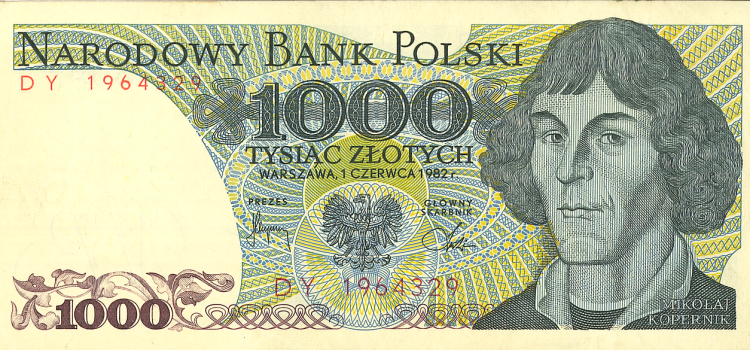
Introduction
Russia has always maintained a certain level of mystery when it comes to its financial reserves. How much money does the Central Bank of Russia have? Where does this money come from? Is the money actually being used for good? In this blog post, we will explore what we know about Russia’s central bank reserves and how these funds are being utilized. From gold holdings to rubles, dollar investments and more, read on to learn more about the Russian economy and its financial power.
Russia’s Vast Reserves
Russia has the fifth largest reserves in the world, behind China, Japan, Saudi Arabia, and Taiwan. As of early 2018, Russia’s central bank held $466.7 billion in foreign exchange reserves. The vast majority of these reserves are in U.S. dollars, with smaller amounts in euros and other currencies.
Why does Russia hold so many reserves? One reason is that the Russian government wants to be prepared for a potential crisis. For example, if there were a sudden drop in the value of the ruble, the central bank could use its reserves to prop up the currency.
Another reason is that Russia’s central bank uses its reserves to manage the country’s monetary policy. By buying and selling different currencies, the central bank can influence the value of the ruble and keep inflation under control.
So what do we really know about Russia’s central bank reserves? Not as much as we would like! While we know how much money is being held in reserve, it’s difficult to say exactly what proportion of those assets are invested in each currency. And since the Russian government doesn’t disclose all of its financial transactions, it’s hard to say exactly how those funds are being used.
How They are Managed
As mentioned above, the Bank of Russia’s reserves are managed by its Reserve Management Department. The primary objective of the department is to ensure the safety and liquidity of the reserves, as well as to earn a return on them.
To achieve these objectives, the department employs a number of strategic and tactical tools. First, it actively manages the portfolio of assets held in reserve, including through currency and interest rate hedging. Second, it invests in a diversified set of financial instruments, including government bonds, corporate bonds, and equities. Third, it maintains close relationships with other central banks and international financial institutions.
The Bank of Russia’s reserve management policies are guided by a number of key principles. First, safety is paramount the bank seeks to minimizerisks while preserving the value of its reserves over time. Second, liquidity is important the bank aims to ensure that it can meet its obligations as they come due. Third, return is important the bank strives to earn a positive return on its reserves so as to contribute to its overall profitability.
What They are Used For
In order to understand what Russia’s central bank reserves are used for, it is first necessary to understand what they are. Central bank reserves are funds that a central bank holds in reserve in order to be able to meet its financial obligations and maintain confidence in the economy.
There are a number of different ways that central banks can use their reserves, but the most common way is to use them to manage their country’s currency. By buying and selling foreign currencies, central banks can influence the exchange rate of their own currency. This can be useful in times of economic turmoil, as it can help to stabilize the value of the currency.
Central banks can also use their reserves to buy and sell assets such as government bonds. This helps to support the value of government debt and can be used to influence interest rates.
Finally, central banks often use their reserves as a source of emergency funding. If a country’s economy is struggling, the central bank can use its reserves to prop up the economy and prevent a financial collapse.
As you can see, central bank reserves play an important role in the global economy. They are used for a variety of purposes, all of which help to keep the economy stable and functioning smoothly.
Why They Matter
The central bank’s reserves play an important role in the country’s economy and its relations with the rest of the world. They help to stabilise the Russian rouble, support domestic banks and provide a cushion against external shocks.
Russia’s central bank has been gradually accumulating reserves since the late 1990s, when it started running regular trade surpluses. By 2017, it had accumulated $US515 billion, making it the fifth largest holder of foreign exchange reserves in the world.
While the size of a country’s central bank reserves is not always a good indicator of its economic strength some small countries have large reserves while some large countries have small ones it is nonetheless an important metric. Central bank reserves can be used to stabilise a country’s currency, support domestic banks and provide a buffer against external shocks.
In recent years, Russia has been using its foreign exchange reserves to defend the rouble from speculative attacks and prop up domestic banks. This has been successful in stabilising the currency, but has come at the expense of depleting the central bank’s buffers.
As sanctions tighten and capital flight increases, Russia’s central bank will likely continue to use its foreign exchange reserves to support the rouble and prop up domestic banks. This could eventually lead to a depletion of Russia’s international reserves, which would be negative for both the Russian economy and global financial stability.
The Potential Implications of a Change in Policy
Since the early 2000s, Russia’s central bank has been accumulating foreign currency reserves. These reserves provide a buffer against external shocks and help to stabilize the ruble. However, there are potential implications of a change in policy.
If Russia were to sell off its reserves, it could cause the value of the ruble to plummet. This would be disastrous for the Russian economy, which is already struggling. Additionally, it could lead to inflation as imported goods become more expensive.
A change in policy could also have political implications. If Russia sold off its reserves in an attempt to prop up the ruble, it would be admitting that its economy is weak. This could embolden Putin’s opponents and make him look weak domestically. Alternatively, if Putin were to use the reserves to finance military adventures abroad, it could further isolate Russia from the international community.
The Future of Russia’s Reserves
1. Scenarios for Unfreezing
Negotiations in 2025 hinted at potential partial releases for Ukrainian reconstruction under strict conditions, but legal and political hurdles remain high. Any agreement would require consensus from the EU, U.S., and Ukraine.
2.Continued Gold Accumulation
With physical gold safe from sanctions, Russia is likely to maintain or modestly increase gold holdings, further solidifying this pillar of its reserves.
3. Closer Ties with Non-Western Partners
Expanding yuan, dirham, and ruble trade settlements reduces reliance on frozen assets. Russia may deepen financial integration with Iran, Turkey, and emerging markets in Africa and Latin America.
Conclusion
Russia’s central bank reserves—hovering around $680 billion in May 2025—reflect a complex mix of foreign currencies, gold, SDRs, and an IMF position. Western sanctions froze up to $300 billion, prompting a strategic pivot into gold and non-Western currencies. These reserves play a vital role in stabilizing the ruble, funding government spending, and defending against economic shocks. Yet legal battles, potential depletion risks, and geopolitical bargaining over frozen assets create ongoing uncertainty. As Russia and other central banks diversify and adapt, the makeup and usability of international reserves will remain a key front in global financial diplomacy.










